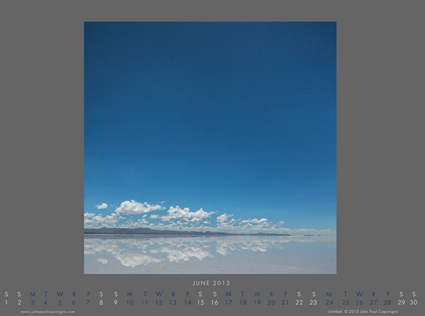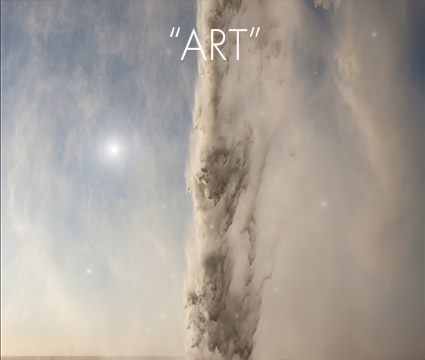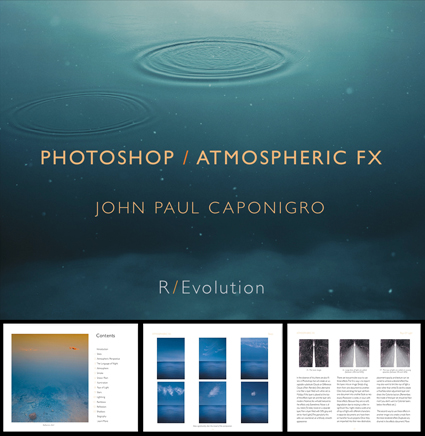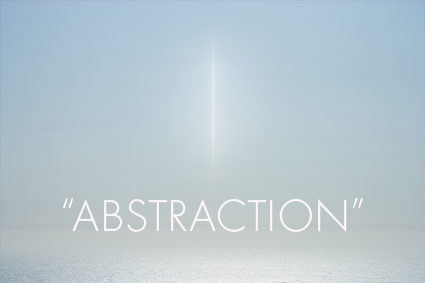Free Desktop Calendar – June

My free May desktop calendar features an image from the Atacama desert.
Download it here now.
Find out about upcoming events here.

My free May desktop calendar features an image from the Atacama desert.
Download it here now.
Find out about upcoming events here.
Refraction LX, Penola Straight, Antarctica, 2009
A voice inside my head was grousing, “There’s nothing here. It’s not good enough. You’re not good enough. Someone else has done this before. You’ve done this before. You’re uncomfortable. You’ll have better luck next time.” I’d heard it all before. So I changed my inner dialog, “There’s something here; you just have to find it. You know how much you like the surprise when you do. You have a unique sensibility. You’ll bring something new to the situation. You can do it. It will be great. You’re enjoying this.” If I hadn’t shifted the tone of my self-talk I would have given up before I got started, instead I stuck with it, for hours, and succeeded, many times. Refraction LX was just one of that morning’s successes.
You’ve heard it all before too. “You’re just like … you always … you never … you’ll never … why try …” As Carla Gordon said, “If someone in your life talked to you the way you talk to yourself, you would have left them long ago.” We’re told that to improve and reach our full potential that we have to be our own worst critics. It’s true that there is a time and a place for this – but it’s limited. Don’t make it a full time occupation. If you do, you may never get where you need or want to go.
Professional athletes and performing artists have coaches and directors who not only train them but also encourage and inspire them as well. So do many CEOs and salesmen. So do many people from many walks of life at different times in their lives and stages in their careers. They may even engage different types of coaches at different times for different needs. When was the last time someone coached you? When was the last time you coached yourself? Even if you’re lucky enough to find the right creative coach who can help guide you to perfect practice, they can’t do all the work for you; you have to do the work too; after all, in the end, they’re training you to do it yourself. You can’t afford to wait and find your perfect creative coach. Instead, become that person.
Energize yourself. Affirm your abilities. Take note of your previous accomplishments. Set tangible goals for the future. Chart your progress along the way. Provide yourself incentives. Reward yourself. Celebrate your accomplishments – both verbally and visually, privately and publicly. Be specific using precise language. Give yourself pep talks. Frequently use positive affirmations. Don’t think you can do it? Tell yourself you can. And then do it. Watch your self-talk – and change it for the better. It’s a mindset. If you want better results create a better mindset.
When you talk about yourself or your work, do you use positive or negative words? The words we use can be very revealing about our orientations, attitudes and beliefs. Many times, when we speak about ourselves, if we speak about ourselves, we downplay our abilities and accomplishments. It’s true that no one likes a raving egomaniac. But, there’s a real difference between arrogance and confidence. Confidence is attractive and inspiring; arrogance isn’t; neither is insecurity. Don’t let your insecurities get the best of you. Be careful not to talk yourself down, cut yourself off short, or fall completely silent. Instead, learn to speak simply and directly about yourself and your work and above all share your enthusiasm. Not feeling it? Act as if you do. With just a little practice you will begin to feel it. It’s true we should all beware of over confidence. And, critical feedback, the right kind and the right amount, is useful for improving performance too. Peak performance and growth take the right balance of positive and negative feedback. But ask yourself, “How balanced are you?” If you’re like most people, you’re not very balanced at all. Change this and you’ll tip the scales in your favor. This takes constant monitoring and recalibration but you’ll soon see substantial changes that make it not just worthwhile but invaluable.
How important is this? Consider how much money is spent every year on motivational resources like books, videos, lecture, workshops, and more. The figures are enormous. That’s how important it is to other people. Ask yourself, “What’s the price of not doing it?” That’s far greater. Don’t pay it. Just do it.
Questions
What is the state of your current self-talk?
How many ways can you improve your self-talk?
How many ways can you make your self-talk more energized?
How many ways can you make your self-talk more meaningful?
How many ways can you measure the results of improved self-talk?
Find out more about this image here.
View more related images here.
Read more The Stories Behind The Images here.
Enchambered, 1996, Arches National Park, Moab, Utah
The symmetry is marvelous, but it would be even better if it was rotated a few degrees. The color is rich, but it could be a little more saturated – not too saturated. The shadows are a touch too dark; they need more detail. The space in the center is too empty. What should go in it? A stone? It blocks the entrance. A bone? It brings unwanted associations of death. A tooth? Don’t give Freud the pleasure. How about something non-material like light? That’s it. But a little irregular. Now the environment needs to reflect the new light source. How light should the surrounding walls become? A little lighter, no that’s too light. And lighten only the central arch so that the source of light appears to be in not in front of the canyon walls. That’s it. Are you sure? I’m sure. Are you really sure? That’s enough. So it went, my dialog with my inner critic as I made this image – Enchambered. My inner critic would have been either maddening or demoralizing if I hadn’t come to trust it so much over the years.
Your inner critic can be a terrible adversary or a powerful ally. Which one it becomes depends on how you relate to and use it. Like any animal, proper care and feeding can work wonders while neglect and abuse can produce monstrous results.
The inner critic’s powers of analysis and forethought are truly exceptional. It’s a protective mechanism. Its job is to help you avoid potential dangers. It’s excellent at identifying weaknesses or shortcomings that if left uncorrected and allowed to continue unchecked may have adverse affects. It can quickly identify potential areas for improvement. It can provide all sorts of extremely valuable feedback.
But, the inner critic has its limitations. The inner critic speaks from a point of fear. It motivates with fear too. It’s a pessimist. It’s often accurate, but never infallible. Because of this, it isn’t good at being supportive, but instead may create doubt and insecurity. Its criticism may not be constructive, if its feedback isn’t placed in a useful context. If it goes too far astray, its affects can produce negative results and even lead to paralysis.
So how can you turn this powerful voice from enemy into ally? It’s all in your attitude. First consider the inner critic a trusted ally – one with limitations. Call on it whenever you need a good dose of tough love. Give it free reign to speak candidly and fully, for a limited time only. Weigh everything it offers appropriately; remember it’s wearing the opposite of rose colored glasses. Whenever you hear the voice of the inner critic unbeckoned, ask if what it has to offer is helpful. If it is, use its feedback to improve your results. If it’s not, calmly acknowledge it. Tell it you value it as an ally both in the past and in the future, and clearly state the reason(s) you’ve decided to make the choice you’re making. Tell it you will continue to consult with it in the future. You might even give it an alternate project to work on. Stay calm; it can feed on negative emotions. Once you’ve made your decision, be firm. Remember, like a child having a tantrum, there may be times it needs to be silenced; give it a time out. It can take a lot of energy to manage your inner critic well, so afterwards (There must be an afterwards; giving the inner critic free reign 24/7 is a recipe for depression.) you may need to take a break or even engage your inner coach to reenergize yourself and return empowered with new perspectives.
The inner critic is most valuable at certain stages in a creative process. The inner critic has little to offer early in the creative process; it’s the kiss of death during brainstorming sessions but it’s very useful afterwards when sifting through the wealth of material that’s produced in them. It becomes increasingly valuable further on in a creative process, particularly at key turning points when evaluating results – identifying and rating strengths and weaknesses, opportunities and threats, and performing cost benefit analyses. Often, towards the end of a creative process, it will provide just the thing you need to pull it all together or help you take it up to the next level.
Questions
When are evaluative questions and statements most useful?
When are evaluative questions and statements not useful?
What is the most beneficial attitude to approach them with?
What’s the most productive way to ask and state them?
When are they energizing?
When are they enervating?
How do you reconcile conflicting results that are sometimes generated?
How long should you stay in this mode?
When should you stop?
Find out more about this image here.
View more related images here.
Read more The Stories Behind The Images here.

Here’s a collection of my favorite quotes on abstraction.
“Art is not a thing; it is a way.” – Elbert Hubbard
“Art, in itself, is an attempt to bring order out of chaos.” – Stephen Sondheim
“All religions, arts, and sciences are branches of the same tree.” – Albert Einstein
“Art is the beautiful way of doing things. Science is the effective way of doing things. Business is the economic way of doing things.” – Elbert Hubbard
“Art disturbs, science reassures.” – Georges Braque, Le Jour et la nuit
“A work of art is above all an adventure of the mind.” – Eugene Ionesco
“A work of art which did not begin in emotion is not art.” – Paul Cezanne
“Art is literacy of the heart” – Elliot Eisner
“All art is but imitation of nature.” – Lucius Annaeus Seneca
“Great art picks up where nature ends.” – Marc Chagall
“Art is a collaboration between God and the artist, and the less the artist does the better.” – Andre Gide
“The perfection of art is to conceal art.” – Quintilian
“The aim of art is to represent not the outward appearance of things, but their inward significance.” – Aristotle
“While I recognize the necessity for a basis of observed reality… true art lies in a reality that is felt.” – Odilon Redon
The principle of true art is not to portray, but to evoke.” – Jerzy Kosinski
“That art is best which suggests most.” – Austin O’Malley
“What is real is not the external form, but the essence of things… it is impossible for anyone to express anything essentially real by imitating its exterior surface.” – Constantin Brancusi
“Art is a step from what is obvious and well-known toward what is arcane and concealed.” – Khalil Gibran
“The mediator of the inexpressible is the work of art.” – Johann Wolfgang von Goethe
“Vision is the art of seeing what is invisible to others.” – Jonathan Swift
“Art is not what you see, but what you make others see.” – Edgar Degas
“Art does not reproduce the visible; rather, it makes visible.” – Paul Klee
“Art is the lie that enables us to realize the truth.” ― Pablo Picasso
Find more Creativity Quotes here.
Discover more quotes daily in my Twitter and Facebook streams.
Terry White shares his favorite five new features in Photoshop CC.
View more Photoshop videos here.
Learn more in my digital photography and digital printing workshops.
Russell Brown demonstrates his favorite five new features in Photoshop CC.
View more Photoshop videos here.
Learn more in my digital photography and digital printing workshops.
Julianne Kost details her favorite five new features in Photoshop CC.
View more Photoshop videos here.
Learn more in my digital photography and digital printing workshops.

My ebook Atmospheric FX will help you take control of the weather in your images. Weather can alter the mood of any image. Sometimes weather makes the image. Photographers learn many ways to make the most of the weather. Now, you no longer have to wait for the perfect weather, you can create it using Adobe Photoshop. Learn to do this and you will dramatically expand your creative possibilities. Add an accent or transform an entire image. The choice is yours. Think of the possibilities!
Table of Contents

Here’s a collection of my favorite quotes on abstraction.
“Abstraction forces you to reach the highest level of the basics.” – Alan Soffer
“Abstraction is a mental process we use when trying to discern what is essential or relevant to a problem; it does not require a belief in abstract entities.” – Tom G. Palmer
“Abstract literally means to draw from or separate. In this sense every artist is abstract… a realistic or non-objective approach makes no difference. The result is what counts.” – Richard Diebenkorn
“To abstract is to draw out the essence of a matter. To abstract in art is to separate certain fundamentals from irrelevant material which surrounds them.” – Ben Shahn
“One of the most striking of abstract art’s appearances is her nakedness, an art stripped bare.” – Robert Motherwell
“It was only since the turn of the century that one returned to the immense role that abstraction plays in the human mind by its power of concentration upon absolute essentials.” – S. Giedion
“I understand abstract art as an attempt to feed imagination with a world built through the basic sensations of the eyes.” – Jean Helion
“Painting, like music, has nothing to do with the reproduction of nature, nor interpretation of intellectual meanings. Whoever is able to feel the beauty of colors and forms has understood non-objective painting.” – Hilla Rebay
“What does that represent? There was never any question in plastic art, in poetry, in music, of representing anything. It is a matter of making something beautiful, moving, or dramatic – this is by no means the same thing.” – Fernand Leger
“An abstract painting is exactly what it purports to be, whether it be paint splatters or stripes, while a representational painting has to give the illusion of the paint being air, or flesh, or flowers… therefore abstract paintings are rather concrete while representational paintings are rather abstract.” – David Leffel
“The abstract painter considers the realist painter to be the abstract painter and himself the realist because he deals realistically with the paint and does not try to transform it into something that it is not.” – Jimmy Leuders
“Abstract art has helped us to experience the emotional power inherent in pure form.” – Anton Ehrenzweig
“I expect of abstraction as much as what imagery does for me… to carry meaning.” – Kay WalkingStick
“The goal of abstract art is to communicate the intangible, that which eludes the photograph and normal seeing.” – Curtis Verdun
Read More
Condensation II, Rockland, Maine, 2001
Were it not for the massive stones of the breakwater that cuts into the ocean for fully one mile before ending at a lighthouse that guards the entrance to the harbor of Rockland, Maine, you’d feel like you were walking on water as you make your way across it. At sunrise and sunset, you’re surrounded on all sides by aqueous color, unless there’s fog and then you can hardly see. Then, as you walk the stones out into the sea, there comes a point when you can’t see where you’ve come from or where you’re going to. It’s disorienting – and magical. You could be anywhere. You could be nowhere. You could end up in either place.
Sometimes the less you can see, the more interesting it becomes. Then, imagination takes over. It’s clinically proven that when people are subjected to minimal sensory input (such as floating in an isolation chamber) for long periods of time, they begin hallucinating – the inside comes out. Creatives often ask how they can leave room for the viewer, encouraging interactivity and participation, rather than spelling it all out, breeding passivity and detachment, knowing that doing so often creates more powerful and personal experiences for them. There is such a thing as ‘too much’. You want to give people enough to enchant them, but not enough to dispel the magic. This leads to the question, “How much room can you leave for the viewer without losing your message?”
Simplicity works for so many reasons. With fewer elements in play attention is concentrated on what remains. There’s more is riding on what’s left. There are no distractions. Ordinarily, this leaves fewer doubts as to what to focus on. Here, in this image, as there is only vapor and water and the suggestion of a horizon, what is taken for granted and often goes unseen comes forward – light and how it fills the air. Strip things down far enough and you can see what ordinarily is invisible.
This image takes my impulse to strip things down to their essentials to its extreme. It presents an experience of space and light, simultaneously empty and full, that is profoundly simple but not simplistic. It asks more questions than it answers. It takes questions like, “How much can you do with how little?” and “How distilled can you make an experience?” and goes further to “How little does it take to make a representational image?” and “What are the foundations for our understanding of reality?” A chain reaction is started and more questions arise.
In so many ways, not just because of the frames they put on the world, images are always leaving things out. They work best when they do this with purpose. They work best when they leave only the essentials and leave out the rest. Sometimes, more can be said with less. Sometimes some things can only be said with less.
Questions
When is more less?
When is less more?
How can you do the most with the least?
When does simple become simplistic?
Find out more about this image here.
View more related images here.
Read more The Stories Behind The Images here.